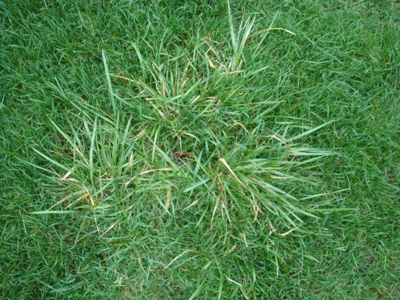Turf & Lawn Blog
Lawn Turf Problems - Couch Grass
If you’ve done a fair bit of gardening, you probably already know about couch grass, Elymus repens, a perennial weed with spreading roots. It’s one of those that can regenerate from each little bit of root, so you really need to dig out every last bit of root, and not leave the ends behind in the turf. And the trouble with getting it into your lawn is that it can take a while to identify it as couch grass, and by then, it could have become well-established, and threaten to take over. And once it’s in the lawn, it rapidly spreads into your borders or vegetable garden, giving you a real headache.
It looks like any other tuft of garden turf from above, but grows fast. And underneath, when you pull up a clump, the roots are quite different from most grasses. Most grasses have a small clump of thin, hair-like roots. But the roots of couch grass are white, thick, brittle, and almost wiry in appearance, twining around the roots of other plants. So once you’ve dug up a clump of lawn turf, you can be pretty certain of what you’ve got.

The best non-chemical control is to dig it out of the turf very carefully. And then dig it out again, to remove any new clumps that have come from small bits of root that were left behind. If you’ve really got it infesting your lawn, you may need to dig up the whole lawn and remove it. In which case, dig out all the infected area, and make sure you’ve got all the roots out, then treat fully with glyphosate to kill off all the couch. Wait a few weeks, and treat again with glyphosate if necessary. You want to be certain that you have removed every last bit before you start buying turf rolls to relay the lawn. It would be annoying, to say the least, to lay new lawn turf and then find it had been re-infested!
If you have to dig up your entire lawn, then you can order quality lawn turf from Turfgrowers to help get your garden back to normal. You can use our turf calculator to make sure that you have the right amount of turf for your garden. We can even advise you on how to lay turf if you want to have a go yourself, we have years of experience so can give you hints and tips on how to do it yourself.
The problem with glyphosate, and the reason that you can’t just launch straight in there with it, is that it is non-specific. Yes, it will kill couch grass very efficiently, but it will also kill your lawn turf and any other plants that get in the way. Before spraying, cover any plants that might be in the firing line with polythene, and don’t remove until you’re certain that it has dried. The best times to spray are early in the spring, when the couch grass growth is young, and in October to mid-November. Don’t spray during a drought, as it won’t be very effective. You may need to carry out more than one treatment, so wait a couple of weeks before replanting any area treated against couch grass.
When you subscribe to the blog, we will send you an e-mail when there are new updates on the site so you wouldn't miss them.
